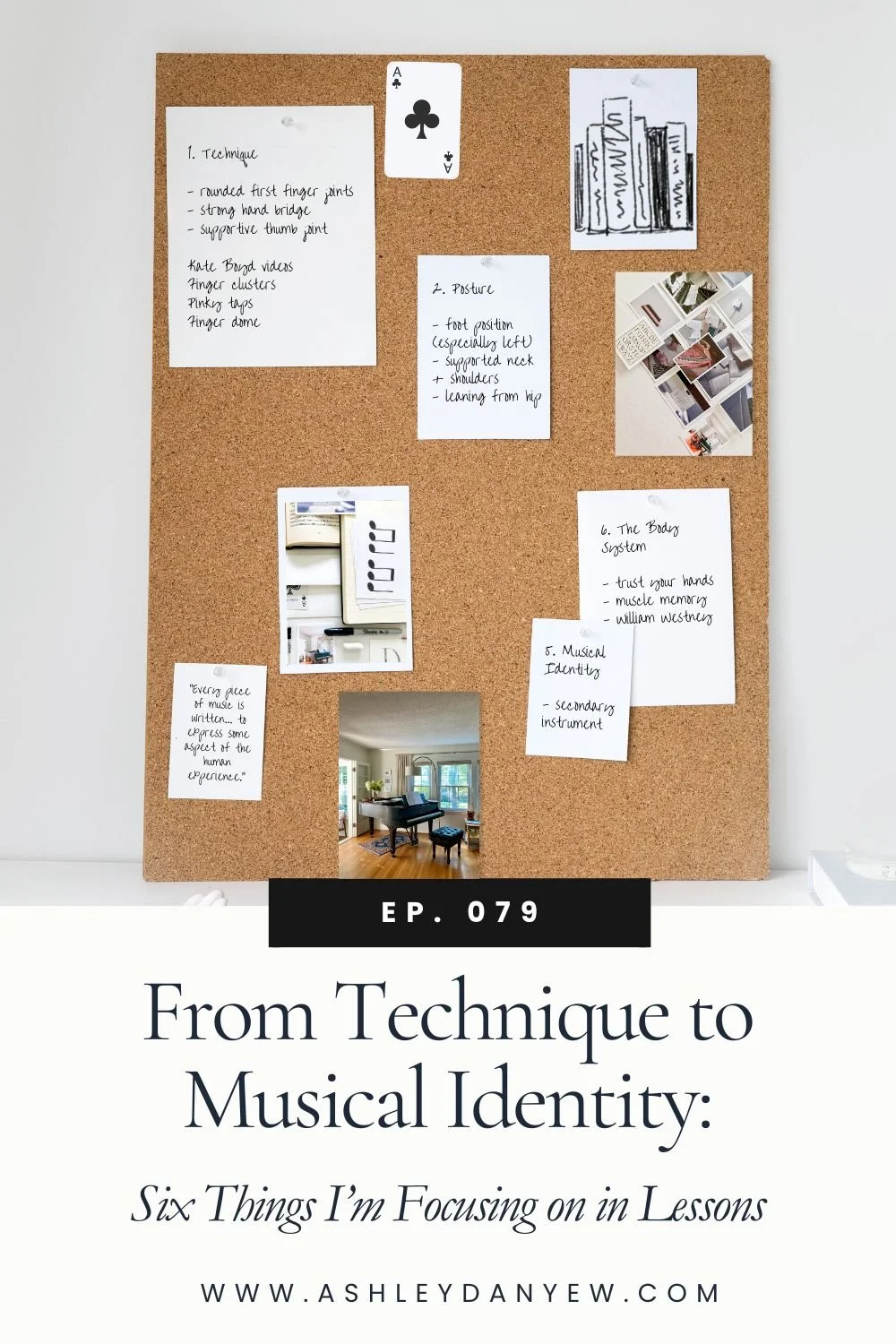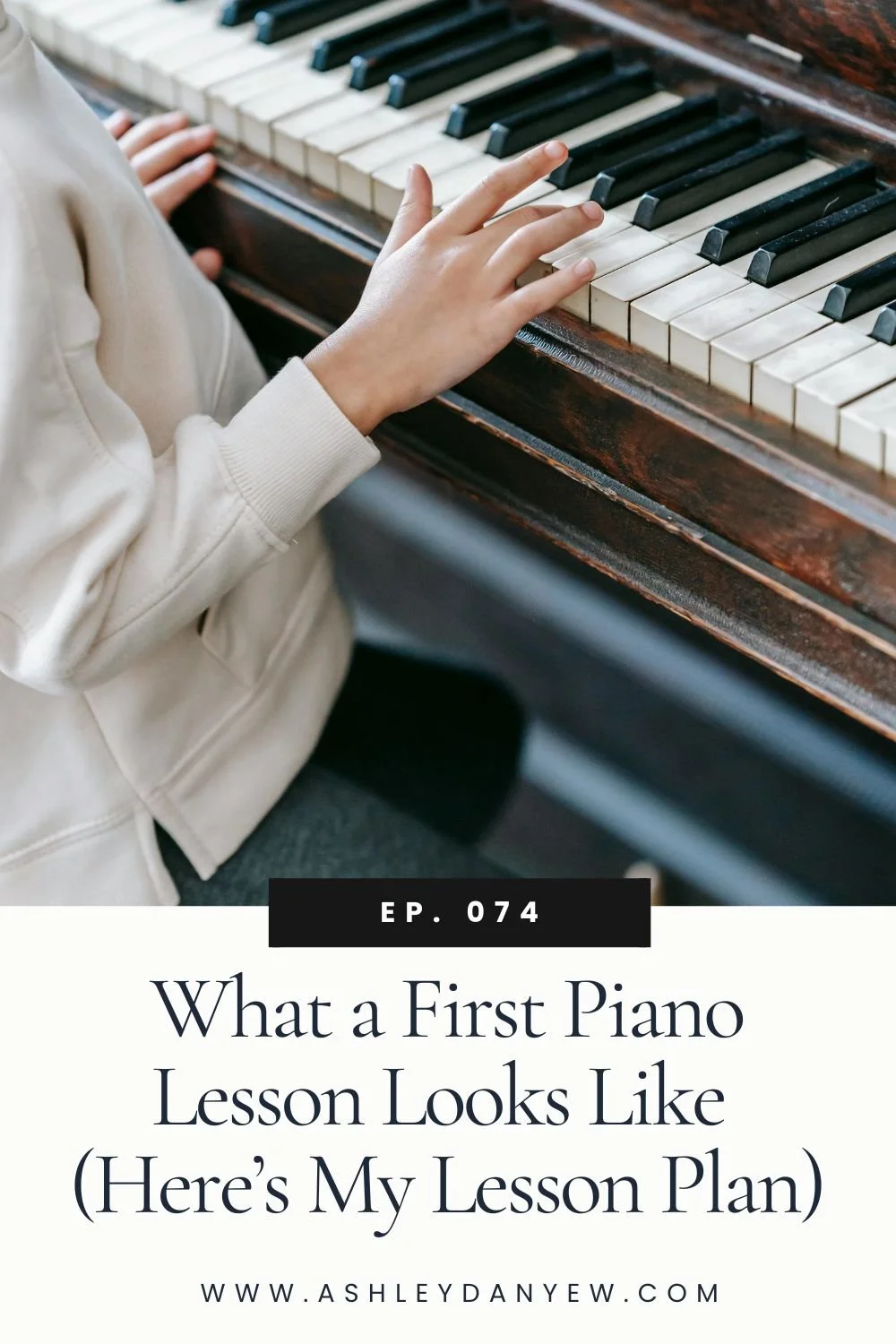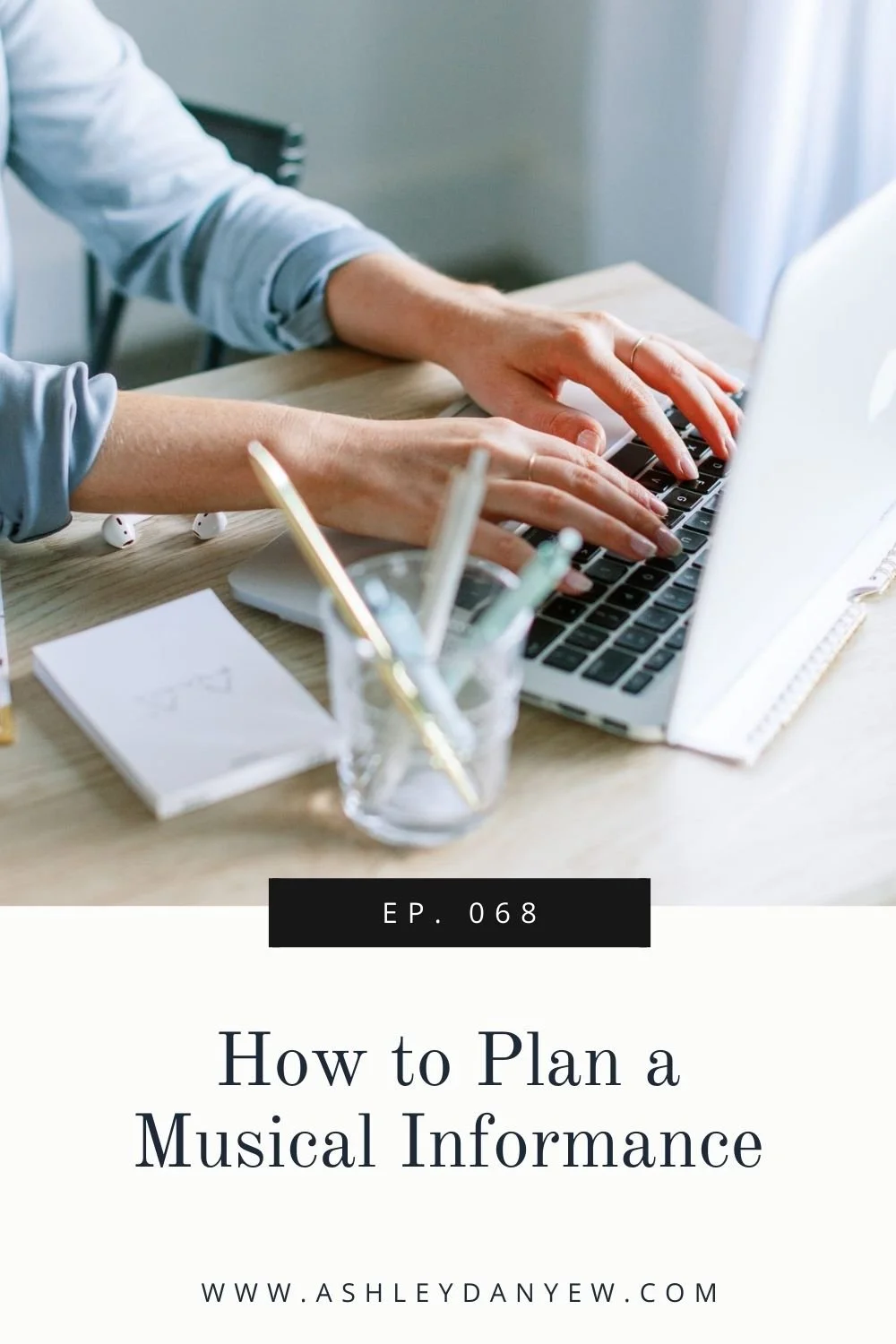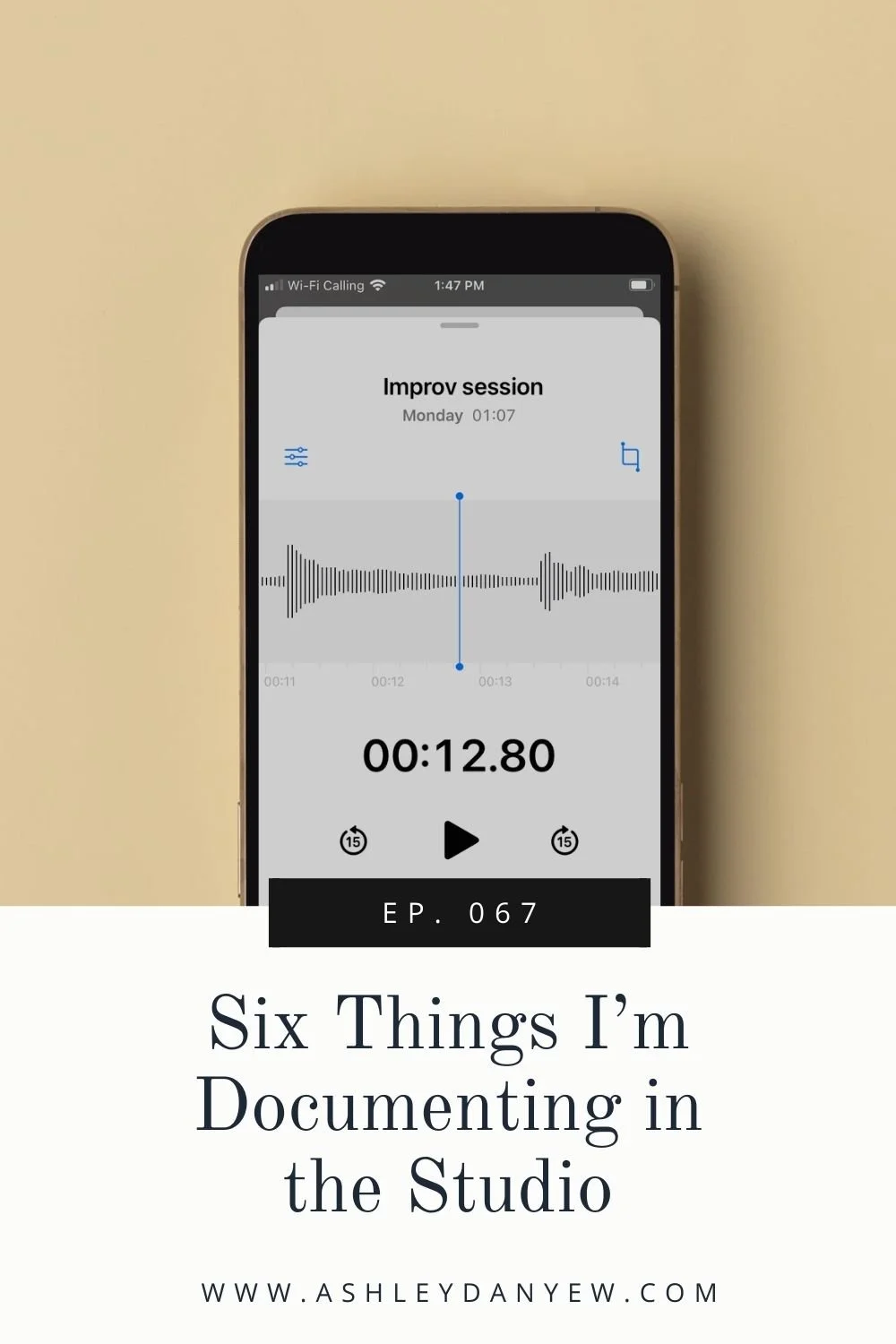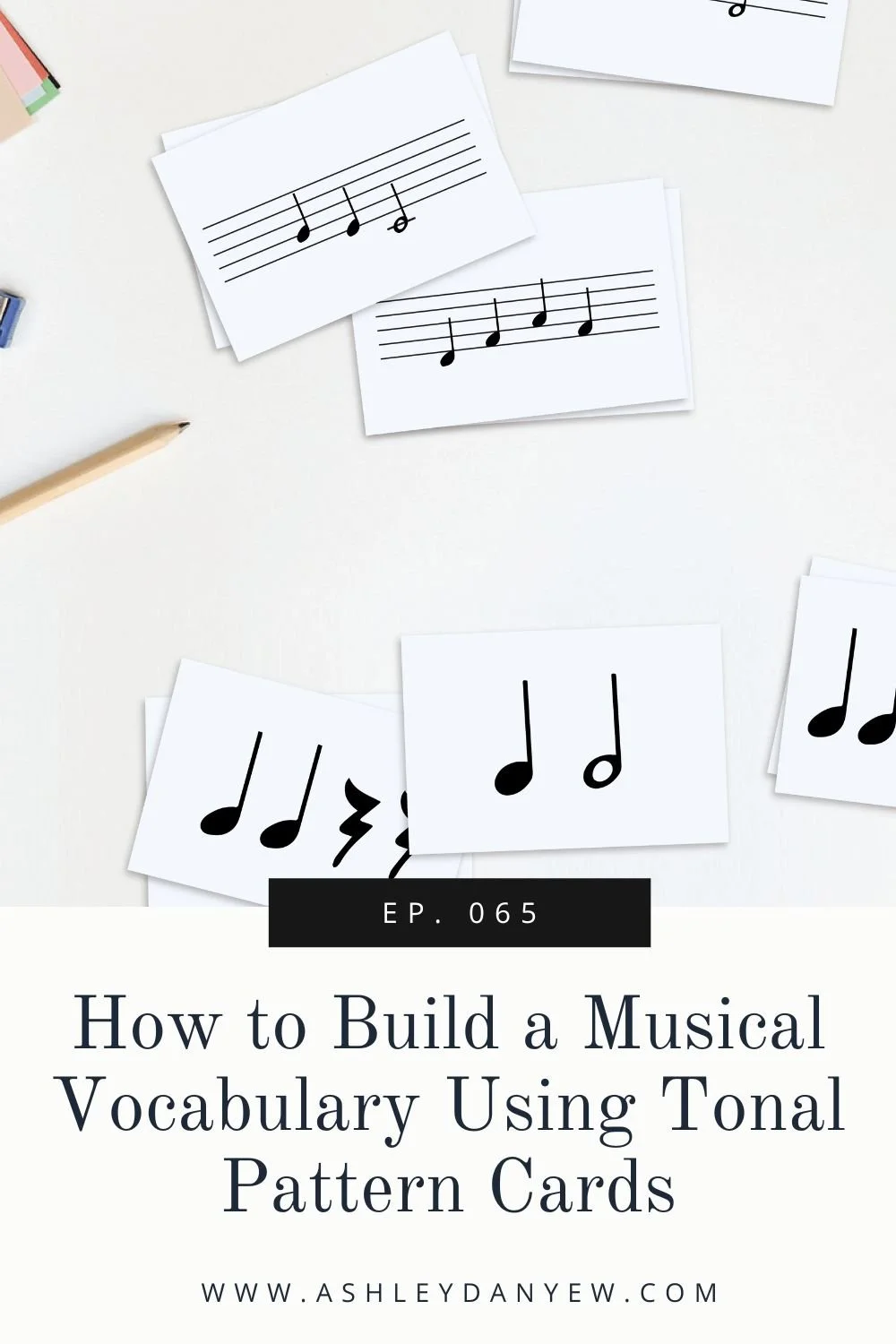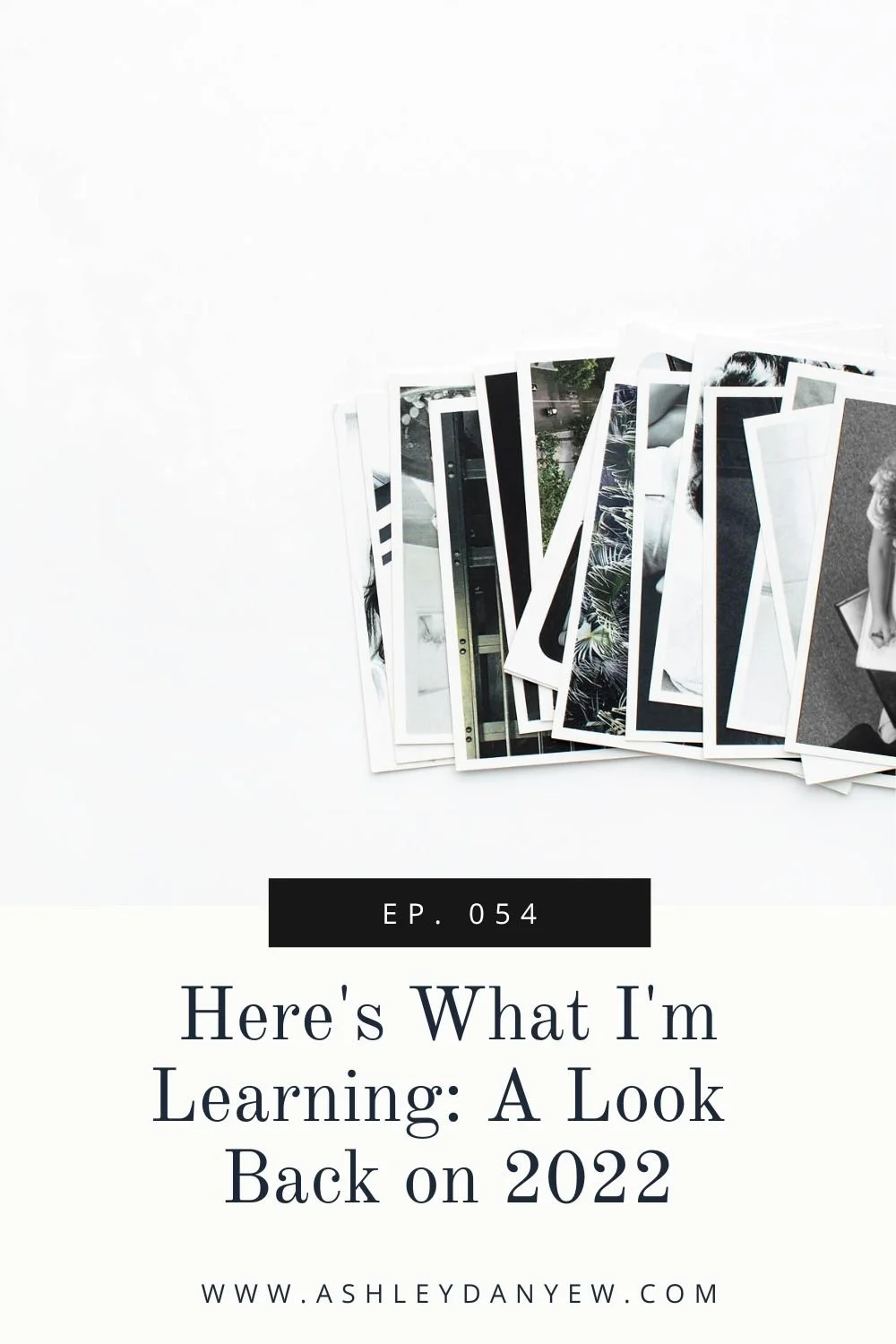Resources Mentioned
Wave Invoicing - a free online tool for sending invoices, receiving payments, and keeping up with basic bookkeeping
The Piano Syllabus (2015 Edition) by Royal Conservatory of Music / Music Development Program
We’re halfway through the school year and no matter how many years I do this, I always feel the same excitement around a fresh start and trying new things. There are certain parts of my routine that I like coming back to—things I like to keep the same—but there are always a few things I’m ready to change in my teaching when the new year rolls around.
I've learned a few things over the past few years and asking the questions, “What’s working?” and “What’s not working?” always provides a sense of clarity on what I can change and how I can improve things in the year ahead.
All that being said, I’m trying a few new things this year in my studio and today, I want to share them with you.
I’m taking you behind the scenes of my studio today to give you an inside look at how I organize things, the systems I have in place, and a few new things I’m trying this year (we’ll see how they work out as the year goes on!).
I don’t know about you, but I tend to get to certain a point in the year where I become really aware of the systems and processes I have in place to help keep my life and business organized.
Usually, this happens at one of two times: the first time it hits is right around the first of the calendar year, after the rush of the holidays when I’m craving quiet, simplicity, clarity, and less clutter. The second time is usually over the summer, in those final weeks before school starts as I’m trying to prepare, communicate with parents, and organize my schedule.
At these times of the year, it becomes really clear to me what’s working in my life and business, and what’s not. Here’s an example:
What’s Working:
Teaching four days a week and taking Fridays to work from home
Billing by the semester, rather than the month, so each monthly payment is the same (this is easier for parents to keep track of and it allows me to have a consistent income for the semester)
Using online invoicing software to create, send, and manage invoices
What’s Not Working:
Scheduling make-ups during the semester (I got to a point where I didn’t have enough availability in my schedule to teach make-ups and ended up teaching on school holidays and during vacation weeks to catch up)
Having invoices due by the first lesson of the month (this meant that everyone had a different due date for their tuition payment and if school was canceled or someone had to miss a lesson, they didn’t pay until a week later)
Researching new repertoire at an appropriate level every time a student needs a new book
These were my pain points, the things that caused frustration or made me feel like I was spending an unnecessary amount of time on administrative work each week.
The solution? A few new strategies and systems in place from the beginning of the year.
Four Things I’m Doing Differently in My Studio This Year
1. A flex week for make-up lessons.
I’m using the last week of each semester as a flex week for make-up lessons. Basically, if a student needs to cancel (with more than 24 hours’ notice) or school is closed due to weather, one lesson per student, per semester can be made up during this flex week.
The beauty of this model is that students keep their regular lesson day and time and I simply don’t count this week in their tuition. If a student isn’t owed a make-up, they can still have a lesson during flex week and the tuition will be added to the following term.
This means no more make-up lessons during the semester! No more teaching on school holidays or during break weeks to try to catch up.
2. New studio policies and payment due dates.
I finally took the time to outline what was important to me in my studio policies and update some things that were unclear or causing frustration (for all of us!) during the year. A quick highlight of some of the new things I added:
Every student will be offered one make-up lesson per term (Fall, Spring, Summer), as in previous years. However, as I mentioned a minute ago, that one make-up lesson will be automatically built into the Fall and Spring schedule during what I’m calling Flex Week (basically, the last week of the semester).
Snow days are a fact of life when you live in the northeast. And, since I teach at a school, I’m at the mercy of last-minute cancellations. I’ve always struggled a little bit with what to do for snow days and other weather-related closures. Do I forfeit a whole day of income every time that happens? Should the parents still be expected to pay? It’s no one’s fault, so it doesn’t feel fair to charge families for lessons in these circumstances. Thus, my new policies state that if school or after-school activities are canceled, lessons will also be canceled. I will offer make-up lessons if I happen to have openings during the week from other cancellations, the lesson can be made up during Flex Week, if no other make-ups are owed, or I’ll apply a lesson credit to their next invoice.
And finally, all tuition payments are due by the 1st of the month rather than by the first lesson of the month (which varies by student). Also, to encourage families to pay on time each month, I added a notice about late fees. This hasn’t been a huge issue in the past, but I have, on occasion, had anywhere from 1-4 families running behind on their payments—“I forgot my checkbook today, can I pay you next week?” or “I accidentally sent a check through my bank instead of paying through PayPal, so you should expect to see it in about a week.” You know what I’m talking about. And sometimes, it’s not even about making excuses, they just forget to pay. Now, if tuition is more than five days late, a $15 late fee will be added to their account.
3. A master repertoire list, organized by level.
I’m perhaps most excited about this one. I realized at the beginning of the school year that I spend a lot of time researching new books for students.
I like to choose method books and supplemental repertoire that will really resonate with each individual child. As such, I use Faber Piano Adventures for some students, Music Tree for a few others, and Piano Pronto for a couple more. I use supplemental repertoire by Robert Vandall, Martha Mier, Jennifer Eklund, Chrissy Ricker, Andrea Dow, and Jon George. And every time a student finishes one book and is in need of another, I put on my researcher hat and review a selection of books so I can make recommendations to the parent.
This all sounds great, but I realized that I was duplicating my efforts when I do the research for three different students and come up with the same five Level 3 books to choose from.
Why not make a master list of all my favorite supplemental books, organized by level—the ones I recommend most to parents? This still gives me the ability to recommend unique repertoire (so all my students aren’t playing from the same books), but it saves me time looking up links on Amazon and Sheet Music Plus every time and it ensures that I’m recommending books that will complement each student’s current playing level and abilities.
So, I started writing down every book I’ve recommended to students over the years and sorting them by level.
When I say “level,” I’m referring roughly to the RCM (Royal Conservatory of Music) Music Development Program levels. I like to reference their Piano Syllabus (2015) throughout the year to get a sense of where my students are and make sure they’re developing technique and musicianship skills that match the level of the repertoire they’re playing.
Next time a student needs a new book (which, with 22 students, is more often than you might think!), I’ll have a go-to list with product links, ready to go.
4. A teacher notebook.
When I first started teaching piano, I used to keep a teaching notebook—basically, a place to jot down reminders for myself about what to bring to next week’s lesson, what to hear first, a note about reviewing intervals or sight-reading or looking up a new book, etc.
Sometimes, I’d actually make a list of the pieces I heard in each lesson so I had a starting point for teaching that student the following week (in case the student didn’t bring their assignment book).
However, I’m trying to find ways to write less in lessons so I can be more actively engaged with the student and since writing in their assignment book takes up a portion of time already, I’m reserving my teacher notebook for things like repertoire lists and notes to self. So far, this has been a very helpful way to keep track of everyone, chart their progress, manage my schedule, and not let reminders or to-dos slip through the cracks.
You know when a parent catches you at the end of a lesson and asks you to email something to them? Of course, you say yes, but then a whole afternoon of teaching goes by and by the time you get home, you’ve totally forgotten that conversation ever happened. Maybe it will come back to me a day or two later, but not always.
Now, I write down all of those tasks and reminders in my teacher notebook so I don’t have to count on remembering to do them later.
So, there you have it.
Four things I’m doing differently in my studio this year. I hope this is helpful to you in your studio. And I hope it inspires you to mix things up from time to time and reevaluate your systems and strategies to make sure they’re working for you (and not the other way around!).
What’s something new you’re trying in your studio?




